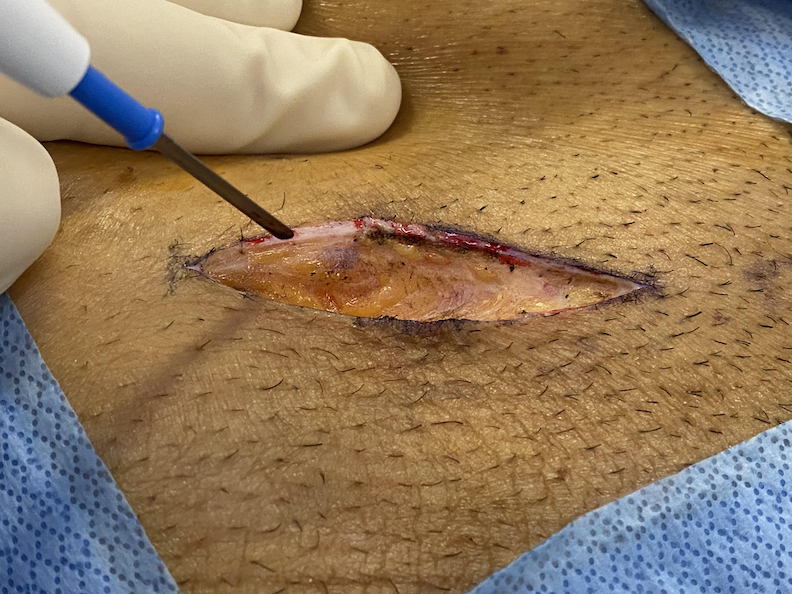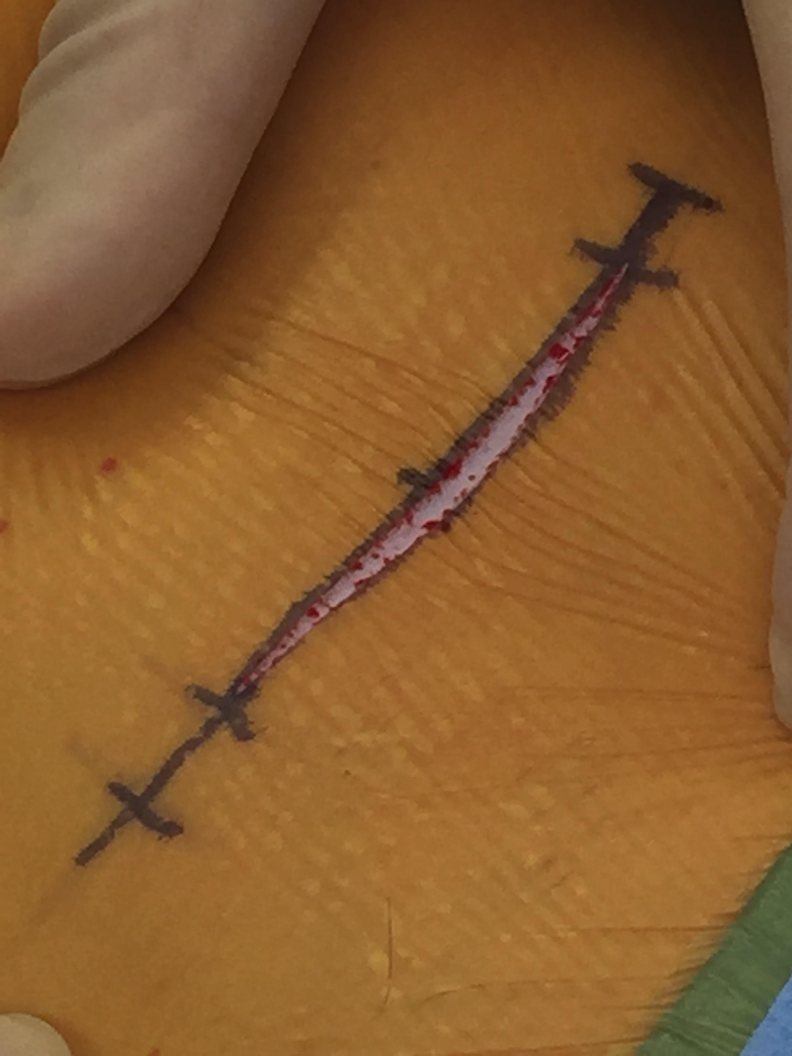A Better Incision: The Best Of Both Worlds
Eric J. Maldonado, MD, Kasper Trocha, MD, Dimitra Lotakis, MD, Marc Wallack, MD, David J. Finlay, MD.
Metropolitan Hospital Center at New York Medical College, New York, NY, USA.
OBJECTIVES: Here we describe the benefits of a novel technique to incise the skin. Most surgeons will use a cold scalpel for full-thickness skin incisions which results in excess bleeding, then spend time achieving hemostasis with electrocautery. Alternatively, the use of electrocautery as the sole instrument to make full-thickness skin incisions causes thermal injury and poor cosmetic results. Lastly, extensive use of electrocautery on epidermal and dermal tissues produces surgical smoke which when inhaled can cause long-term complications and has been shown to contain many known carcinogens. This technique utilizes the strengths of both modalities to create a better incision. METHODS: Scalpel incision is made superficially and lightly through the epidermal layer to avoid bleeding, subsequently, electrocautery set on 10-cutting, is used to incise the dermis and hypodermis.
RESULTS: See Figures 1 & 2.
CONCLUSIONS: This is an improved incisional technique with better cosmesis, less thermal injury as well improved surgical workplace safety minimizing surgical smoke exposure.  Figure 1. Standard result of scalpel incision of epidermis and dermis with electrocautery control of dermal bleeding causing thermal injury.
Figure 1. Standard result of scalpel incision of epidermis and dermis with electrocautery control of dermal bleeding causing thermal injury.  Figure 2A. Scalpel incision of epidermis, exposing underlying white dermis with minimal bleeding. Traction technique for further separating epidermal layer to protect it from thermal injury.
Figure 2A. Scalpel incision of epidermis, exposing underlying white dermis with minimal bleeding. Traction technique for further separating epidermal layer to protect it from thermal injury.  Figure 2B. Completed skin incision down to subdermal/subcutaneous layers, using electrocautery with minimal bleeding and no significant thermal injury.
Figure 2B. Completed skin incision down to subdermal/subcutaneous layers, using electrocautery with minimal bleeding and no significant thermal injury.
Back to 2022 ePosters
